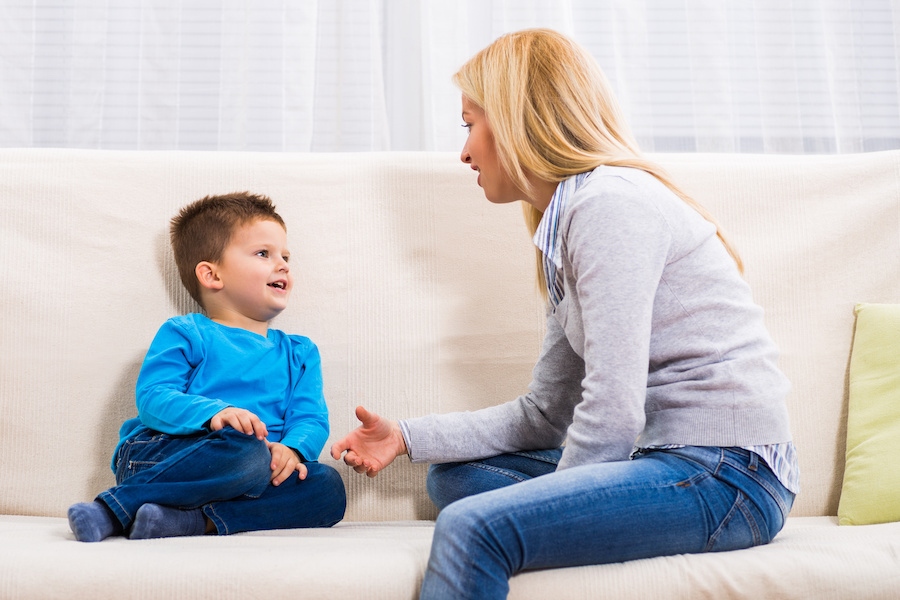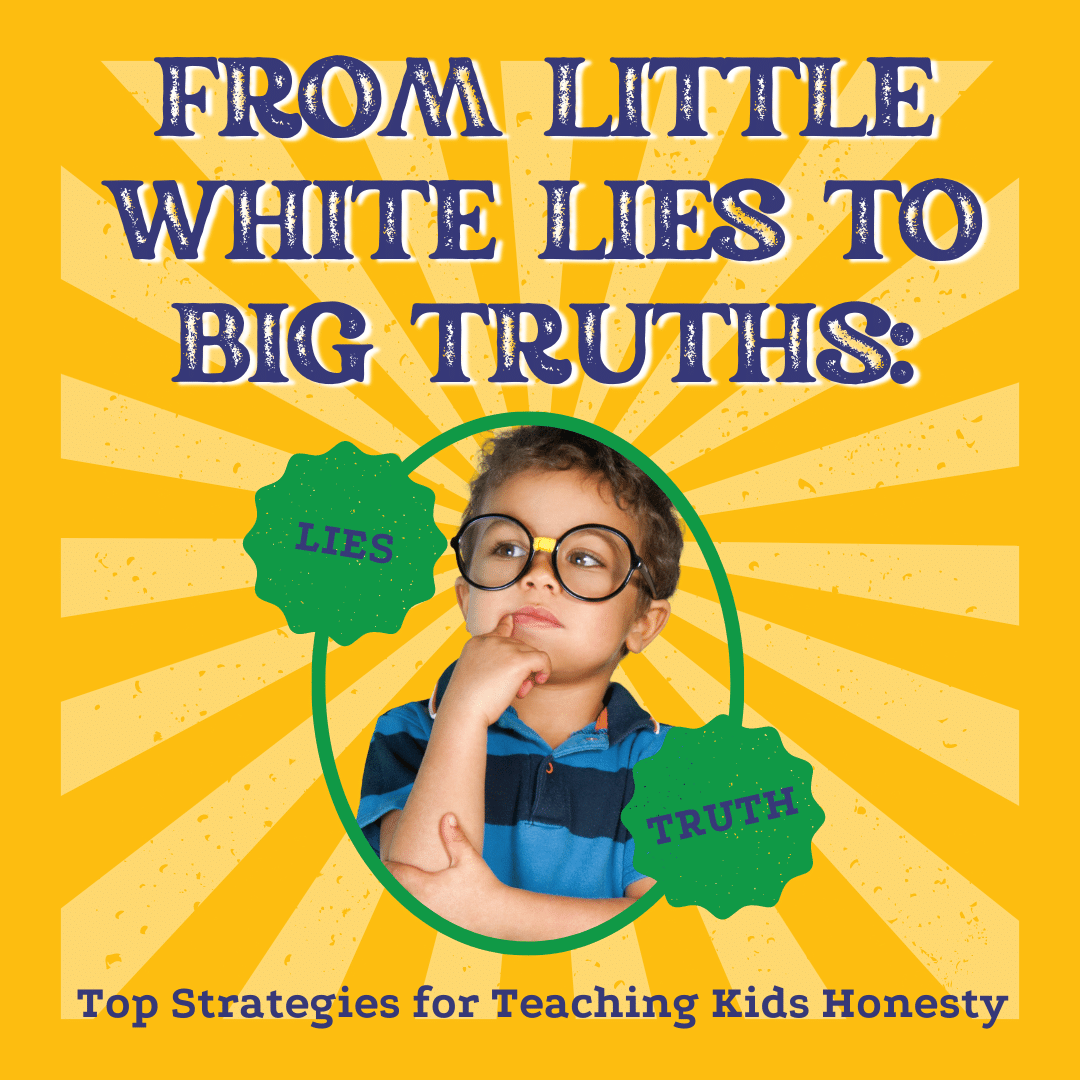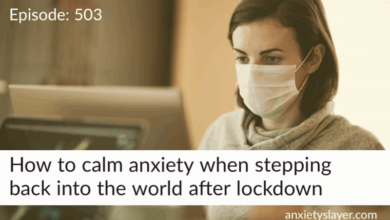
Honesty better for kids talking about scary news is crucial for building trust and resilience. Children often react in various ways to frightening news, and understanding these reactions, alongside the developmental stages influencing their processing, is key. This exploration dives into how honesty, rather than avoidance or misinformation, empowers children to cope with difficult topics and fosters a supportive environment.
This comprehensive guide delves into age-appropriate strategies for discussing various types of scary news, from natural disasters to violence. We’ll explore techniques for structuring conversations, answering children’s questions, and addressing fears. The emphasis is on creating a safe space for open communication and building coping mechanisms.
Understanding Children’s Reactions to Scary News
Navigating the world of news, especially when it involves scary or unsettling events, can be challenging for adults. Children, with their developing minds and limited life experiences, face even greater hurdles in processing and understanding such information. Understanding their reactions is crucial for providing support and ensuring their well-being. Children’s responses to scary news vary widely, depending on factors like their age, personality, and existing anxieties.Children’s understanding of the world and their ability to cope with difficult situations are deeply intertwined with their developmental stage.
Early childhood experiences, both positive and negative, shape their emotional responses. Therefore, recognizing the developmental stage of a child is vital to interpreting their reactions to frightening news.
Different Reactions to Scary News
Children may react to scary news in various ways. Some might express overt fear, crying, or anxiety. Others may withdraw or become withdrawn, exhibiting signs of distress that are not immediately obvious. Some children may express anger or frustration, while others may become overly compliant or seek reassurance excessively. These reactions are normal and a natural part of their emotional development, reflecting their unique coping mechanisms and processing abilities.
Developmental Stages and Information Processing
Children’s ability to understand and process complex information evolves throughout their development. Preschool-aged children may struggle to grasp the full implications of scary news, often focusing on the immediate sensory experiences. Older children, however, may have a better understanding of the context and potential long-term consequences. Adolescents may be more concerned with the social implications and their place in the world.
A nuanced understanding of these developmental stages helps tailor our approach to supporting children in navigating the news.
Age-Appropriateness in Discussions
Age-appropriateness is critical when discussing scary news with children. Younger children may require simple explanations focusing on the immediate situation, minimizing details that could heighten their anxiety. Older children may benefit from more nuanced explanations, including discussions about safety precautions and the steps being taken to address the issue. Adjusting the language, tone, and level of detail based on the child’s age ensures they feel heard and understood.
A parent’s sensitivity and ability to convey information effectively are key.
Recognizing the Need for Extra Support
Identifying children who need extra support after hearing scary news is crucial. Persistent or exaggerated reactions, changes in sleep or eating patterns, and a significant decrease in usual activities are potential indicators of a need for additional help. If a child’s reaction appears unusual or disproportionate to the event, it’s important to reach out to a trusted adult, teacher, or professional for support.
Honesty is truly the best policy, especially when kids are grappling with scary news. Sometimes, it’s tempting to sugarcoat things, but being straightforward and open about difficult situations, like the recent news about the new Medtronic stand-alone CGM Guardian Connect, new Medtronic stand alone cgm guardian connect , can actually help them process information and feel more secure.
It allows them to ask questions and understand the world around them better, ultimately leading to more resilient and thoughtful young minds.
This could include a school counselor, therapist, or pediatrician. Addressing these needs promptly can help mitigate any long-term effects of the news.
The Role of Honesty in Addressing Scary News

Honesty is a cornerstone of a strong parent-child relationship, especially when dealing with challenging or unsettling news. It’s a delicate balance, requiring sensitivity and understanding, but it’s crucial for fostering trust and resilience in children. A child’s perception of the world is often shaped by the information they receive, and a parent’s honesty about scary news plays a significant role in their emotional development.Honesty, in this context, means providing accurate and age-appropriate information, rather than sugarcoating or minimizing the gravity of the situation.
It also involves acknowledging children’s feelings and providing a safe space for them to express their concerns and anxieties. This contrasts sharply with the temptation to avoid the topic entirely or to offer false reassurance, which can undermine trust and create a sense of unease.
Benefits of Honesty
Honesty builds a foundation of trust between parent and child. When children perceive their parents as trustworthy sources of information, they are more likely to approach them with their concerns, even those that seem overwhelming. This trust allows for open communication and fosters a sense of security and reliance on the parent’s guidance during difficult times. Providing accurate information, even if it’s difficult, builds a sense of competence and agency in children, allowing them to process the news and develop coping mechanisms.
Alternative Approaches and Their Drawbacks
Avoiding the topic altogether, or providing inaccurate or misleading information, may seem like a way to protect children from distress. However, this often leads to a lack of trust and a sense of insecurity. Children may feel like they are being kept in the dark, or that their parents are not prepared to address their concerns. This lack of open communication can lead to a deeper sense of anxiety and a diminished capacity for coping with future challenges.
Furthermore, it can create a gap in communication that is difficult to bridge later on.
Honesty is always the best policy, especially when kids are faced with scary news. It’s important to give them the facts, but also to reassure them. For example, sometimes dentists prescribe a lot of opioid pain relievers to children, which is a concerning issue that you can learn more about at this article. However, when kids feel heard and understood, they’re more likely to cope with anxieties and fears.
Open communication, even about tough subjects, builds trust and resilience.
Building Resilience and Coping Mechanisms
Honesty, combined with empathy and reassurance, can equip children with essential coping mechanisms. When children understand the nature of the news and its potential impact, they can begin to develop strategies for managing their emotions. For example, discussing potential safety measures, and the steps taken to address the situation, empowers children and gives them a sense of control.
Parents can help children practice expressing their feelings and anxieties in a healthy way, such as through drawing, writing, or talking to a trusted friend or family member.
Challenges of Honesty and Solutions
One challenge is the potential for overwhelming children with information that is too complex or frightening for their developmental stage. A solution is to tailor the information to the child’s age and understanding. Use simple language, avoid jargon, and focus on the facts in a way that is accessible to the child. Another potential challenge is the parent’s own anxiety or emotional response to the news.
Parents should prioritize their own emotional well-being, seek support from trusted individuals, and model healthy coping mechanisms for their children. This will help them effectively navigate the situation with their children.
Techniques for Talking About Scary News Honestly: Honesty Better For Kids Talking About Scary News
Navigating difficult conversations about scary news with children requires sensitivity and a strategic approach. Children, particularly younger ones, may struggle to process the complex emotions and anxieties that such news evokes. Open communication, coupled with age-appropriate explanations, can help children feel safe and understood.A crucial aspect of these conversations is recognizing the impact of the news on the child’s emotional well-being.
Empathy and validation are key. Acknowledging their feelings, even if the news seems minor to adults, is paramount. This creates a space for open discussion and prevents feelings of fear or confusion from escalating into anxiety.
Structuring Conversations About Scary News
Effective communication involves careful planning and consideration of the child’s developmental stage. A structured approach ensures the conversation remains focused and allows for adequate processing of information. Creating a safe and comfortable environment where the child feels heard and understood is crucial. Avoid overwhelming the child with too much information at once.
- Begin by acknowledging the child’s feelings. Validate their emotions, even if the source of fear seems trivial. Phrases like, “It’s understandable that you’re feeling worried about this,” or “It’s okay to feel scared,” can be powerful tools.
- Provide simple, age-appropriate explanations. Use concrete examples and avoid complex jargon. For younger children, focus on what is happening in their immediate environment and how they are protected.
- Use visual aids or relatable stories to illustrate the news. Pictures, diagrams, or even fictional stories can help children grasp abstract concepts.
- Encourage questions and actively listen to the child’s concerns. This demonstrates that their feelings are important and that their questions are valid.
- Maintain a calm and reassuring tone. Children often mirror the emotional state of those around them. A calm and reassuring tone can help the child feel safe and supported.
Answering Children’s Questions About Scary News
Children often ask probing questions about scary news, and it’s important to answer them truthfully and honestly, but in a way that is age-appropriate. A prepared response can help alleviate anxiety and build trust. Avoid minimizing their concerns.
- Answer honestly, but keep the language simple and straightforward. Avoid technical terms or complex explanations. Explain in a way that is easily understood by the child’s cognitive level.
- Emphasize the steps taken to address the situation. If there are safety measures in place, clearly explain them to the child. For example, if there’s a natural disaster, describe the emergency response efforts or protective measures.
- Explain the limitations of information. If certain details are unclear or unavailable, acknowledge this honestly. Explain that you’ll continue to seek answers and provide updates as they become available.
- Focus on what children can control. Reassure them that they can take steps to protect themselves and their loved ones. Emphasize actions that the child can take to stay safe.
- Encourage open communication. Remind the child that it’s okay to ask questions and that you are there to answer them, even if they are difficult questions.
Addressing Fears and Anxieties
Addressing children’s fears and anxieties is an essential part of navigating the emotional impact of scary news. Helping children process their feelings and develop coping mechanisms can empower them to feel safe and secure.
- Encourage expression of feelings. Provide a safe space for children to express their fears and anxieties. Listen attentively and validate their feelings.
- Teach coping mechanisms. Introduce relaxation techniques, such as deep breathing or visualization exercises, to help manage stress and anxiety.
- Emphasize resilience and hope. Encourage children to focus on positive aspects of the situation, and highlight acts of kindness and community support. Sharing stories of resilience in the face of adversity can be helpful.
- Create a sense of normalcy. Maintain routines and structure as much as possible. This helps provide a sense of stability and control during times of uncertainty.
- Seek professional help if needed. If a child’s anxiety persists or significantly impacts their daily life, consult with a therapist or counselor.
Age-Appropriate Examples
Different age groups will react and process information differently. Adapt your communication style to the child’s developmental stage.
| Age Group | Example Scenario | Appropriate Response |
|---|---|---|
| Preschoolers (3-5 years old) | News about a local fire | Explain the fire department’s role in putting out fires and how everyone is safe. Use simple language and visual aids. |
| School-aged children (6-12 years old) | News about a national crisis | Discuss the situation calmly and provide accurate information about the crisis and steps being taken. Answer questions directly and honestly. |
| Teenagers (13-18 years old) | News about global political events | Encourage critical thinking and provide access to multiple perspectives. Discuss the potential impact of these events on their lives and the world around them. |
Addressing Specific Types of Scary News
Navigating scary news with children requires a nuanced approach. Simply telling them to “not worry” isn’t helpful, and overwhelming them with details can be counterproductive. The key is to provide accurate, age-appropriate information and foster a sense of safety and understanding. Tailoring the discussion to the specific type of news allows for a more effective and reassuring conversation.Understanding the nature of the scary news, whether it’s a natural disaster, a violent event, or a widespread illness, is crucial for determining the best way to respond.
Different types of news require different approaches, recognizing that children process information differently than adults.
Natural Disasters
Natural disasters, like earthquakes, floods, or wildfires, can evoke significant fear in children, especially if they or their loved ones are directly affected. A key aspect of this approach is to provide factual, simple explanations, emphasizing the safety measures in place.
- For younger children (preschool and early elementary), focus on the immediate impact and the safety measures taken. Use simple language like “The wind blew really hard and the trees moved a lot, but the firefighters were there to help.” Emphasize the actions of responders and the safety protocols that are in place. Avoid detailed descriptions of the damage.
The key is to assure them of safety and the efforts taken to protect them.
- For older children (upper elementary and middle school), explain the scientific causes behind the disaster. Introduce the concepts of weather patterns or geological processes in an age-appropriate way. For example, you could explain that earthquakes happen when the Earth’s tectonic plates move, and why early warning systems are critical.
Violence
News reports about violence, whether local or international, can be distressing for children. The crucial step is to acknowledge their feelings while providing a sense of security.
- For younger children, emphasize that most people are good and that there are ways to stay safe in their immediate environment. Highlight the importance of staying close to trusted adults and following safety rules. Avoid using overly complex language or delving into the details of the violence.
- For older children, encourage discussion about the causes and consequences of violence. Use real-world examples to illustrate how violence affects people and the importance of conflict resolution. Explain that violence is not an acceptable solution, and that reporting such incidents is crucial.
Illness
News about illness outbreaks, whether local or global, can create anxiety. The key is to present accurate information in a reassuring manner.
- For younger children, emphasize the importance of hygiene and the role of medical professionals in preventing and treating illnesses. Use simple explanations and focus on proactive measures, such as handwashing and vaccinations.
- For older children, discuss the science behind the illness, the spread of diseases, and the measures taken to prevent or contain the outbreak. This can involve explanations of how diseases are transmitted and the importance of following health guidelines.
Creating a Safe and Supportive Environment

A crucial aspect of helping children cope with scary news is fostering a safe and supportive environment where they feel comfortable expressing their emotions and anxieties. This environment is built on trust, open communication, and consistent reassurance. Creating this space empowers children to navigate challenging situations with resilience and emotional well-being.Establishing a secure base allows children to process information more effectively, reducing the likelihood of long-term negative impacts.
This involves more than just talking; it encompasses actively listening, providing emotional support, and offering coping mechanisms tailored to their age and understanding.
Creating a Safe Space for Emotional Expression
Open communication is paramount. Children need to know that they can express their fears and anxieties without judgment or dismissal. Establishing a non-judgmental atmosphere is crucial; this involves actively listening without interrupting or trying to immediately fix the problem. It’s essential to validate their feelings, acknowledging that their reactions are understandable given the situation. This validation helps them feel heard and understood.
Importance of Open Communication and Active Listening
Open communication isn’t just about talking; it’s about actively listening. This means focusing on what the child is saying, both verbally and nonverbally. Pay attention to their body language, tone of voice, and any unspoken anxieties. Reflecting back what they’ve said demonstrates that you’re engaged and understanding their perspective. Using simple, age-appropriate language and avoiding complex jargon helps ensure they comprehend the information and feel heard.
For instance, avoid using words like “catastrophic” when discussing a natural disaster if the child is young.
Strategies for Providing Emotional Support
Emotional support encompasses various strategies, tailored to the child’s age and maturity. Acknowledge their feelings, even if they seem small or insignificant. Validate their reactions, explaining that many people feel scared or worried in similar situations. Emphasize that their feelings are valid and that it’s okay to feel scared. Avoid minimizing their concerns or dismissing them as “unimportant.” This approach helps build trust and a sense of security.For younger children, simple reassurance, such as holding their hand or cuddling, can be incredibly comforting.
Older children might benefit from discussing coping mechanisms, such as deep breathing exercises or journaling. Allowing them to express their feelings through art, writing, or play can be a powerful outlet for processing the information.
Examples of Activities to Help Children Cope
Various activities can help children cope with scary news. For instance, creating a worry jar where they can write down their concerns can help externalize their anxieties. Drawing pictures or writing stories can help them process their emotions. Engaging in calming activities like coloring, listening to music, or reading a book can provide a sense of normalcy.
For older children, engaging in community service or volunteering can provide a sense of purpose and perspective.These activities allow children to process their emotions in a healthy and constructive way. Encouraging these activities can significantly contribute to their emotional well-being during and after discussions about scary news.
Building Resilience and Coping Skills
Helping children navigate scary news requires more than just explaining the situation. Equipping them with resilience and coping mechanisms is crucial for long-term emotional well-being. Building a strong foundation of emotional intelligence and problem-solving skills enables children to face future challenges with greater confidence and composure. This approach fosters a sense of control and agency, empowering them to handle uncertainty and adversity.Resilience isn’t a fixed trait; it’s a skill that can be developed and strengthened through consistent effort.
Providing children with the tools to manage their emotions and navigate difficult situations empowers them to grow into strong and capable individuals.
Strategies for Building Resilience
Building resilience involves nurturing a child’s innate ability to bounce back from setbacks. Strategies include fostering a supportive environment, encouraging open communication, and providing opportunities for children to express their feelings. Active listening and validation of their emotions are key elements in helping children feel heard and understood. Encouraging children to identify their strengths and past successes helps build their confidence.
Coping Mechanisms for Managing Fear and Anxiety
A range of coping mechanisms can help children manage their fear and anxiety. These techniques are often tailored to the child’s age and understanding. Some effective coping mechanisms include deep breathing exercises, progressive muscle relaxation, and mindfulness activities. Creating a safe space for children to practice these techniques can be invaluable. Visual aids, such as calming images or objects, can be helpful in anchoring the coping mechanisms to a visual cue.
- Deep Breathing Exercises: These simple exercises help regulate the nervous system, reducing feelings of anxiety. Guiding children through slow, deep breaths can calm their bodies and minds. Visualizations can be used to enhance the effectiveness of the exercises.
- Progressive Muscle Relaxation: This technique involves tensing and releasing different muscle groups in the body, helping children become aware of physical sensations associated with anxiety and learning to manage them. Guided instructions can be provided, and a gentle, soothing voice can create a calming atmosphere.
- Mindfulness Activities: Activities that encourage focused attention on the present moment can help children detach from anxious thoughts. Simple exercises like noticing the sensations of their breath or focusing on a specific object can be effective.
Helping Children Understand Temporary Nature of Scary Events
It’s important to help children understand that scary events, while impactful, are often temporary. Explaining that situations are not permanent and that things will eventually improve can provide a sense of hope and reassurance. Sharing personal anecdotes or historical examples of similar events that were eventually resolved can help normalize the situation and demonstrate that change is possible.
Honesty is always the best policy, especially when kids are dealing with scary news. It’s better to explain things simply and directly, rather than sugarcoat or avoid the topic. This is crucial for building trust, especially when the news relates to something as important as healthcare. For example, understanding the implications of recent healthcare mergers can be complex, and resources like what the latest healthcare mergers mean for consumers can help adults better navigate those changes.
Open communication and honest answers are key for children, helping them feel safe and supported through difficult situations.
Using age-appropriate language, avoid sensationalizing the events, and provide factual information in a reassuring manner.
Activities Promoting Positive Thinking and Problem-Solving
Encouraging positive thinking and problem-solving skills is essential in building resilience. Activities like brainstorming potential solutions to challenges, creating gratitude journals, and practicing empathy can cultivate a positive mindset. Role-playing scenarios and encouraging creative expression can provide outlets for exploring feelings and practicing problem-solving. Encouraging children to express their thoughts and ideas in a safe environment can be a powerful way to empower them.
- Gratitude Journals: Regularly reflecting on positive aspects of life can shift focus from negative thoughts. This practice can be adapted for different ages, with younger children simply listing things they are thankful for and older children writing more detailed reflections.
- Problem-Solving Activities: Present hypothetical scenarios or real-life problems. Guide children through the process of brainstorming solutions, evaluating options, and implementing the best approach. Use age-appropriate scenarios that resonate with their interests.
- Creative Expression: Engaging in art, music, or writing can provide an outlet for expressing emotions related to scary news. This can be a valuable tool for processing feelings and developing coping mechanisms.
Handling Children’s Questions and Concerns
Navigating scary news with children often involves a delicate dance of honesty and reassurance. Children, even young ones, are remarkably perceptive and sensitive to the world around them. They absorb information and emotions from their environment, and it’s crucial to acknowledge and address their concerns in a supportive way. This section focuses on how to effectively handle children’s questions and concerns about scary news, fostering a sense of safety and understanding.
Children’s Questions About Scary News, Honesty better for kids talking about scary news
Children may express their worries and anxieties in a variety of ways, ranging from direct questions to subtle changes in behavior. Understanding the spectrum of possible questions is key to providing appropriate responses. These questions might include inquiries about the safety of their immediate environment, the potential impact on their loved ones, or the underlying causes of the unsettling events.
Responding to Children’s Questions and Concerns
When children pose questions about scary news, it’s important to respond in a calm and reassuring manner. Avoid overwhelming them with complex explanations or excessive detail. Instead, focus on providing age-appropriate and understandable answers. Emphasize the steps being taken to address the situation and reiterate the safety measures in place. Crucially, validate their feelings.
Let them know that it’s okay to feel scared or worried, and that their emotions are valid.
Avoiding Minimizing or Dismissing Feelings
A common pitfall is to minimize or dismiss a child’s feelings about scary news. This can lead to feelings of insecurity and a sense that their concerns are not important. Instead, acknowledge their emotions with phrases like, “It’s understandable that you feel worried about that,” or “It’s okay to feel scared when you hear something like that.” Validating their emotions creates a safe space for them to express themselves fully.
Examples of Questions and Responses
- Question: “Will we be safe at home?”
Response: “Yes, we are safe at home. The adults are working hard to keep us all safe. We’ll continue our usual routines, and we’ll keep checking in with each other.” - Question: “Why did this happen?”
Response: “Sometimes things happen that are difficult to understand, but we’re all working together to figure things out. We’ll try to get information that helps us understand.” - Question: “Are there bad people everywhere?”
Response: “No, not everywhere. While some people may act in ways that make us feel scared, most people are kind and caring. We can be cautious and watch out for ourselves, but remember that most people are good.”
Resources for Further Support
- National Child Traumatic Stress Network: Provides information and resources for supporting children affected by trauma, including news-related events.
- Childhelp USA: Offers a national child abuse hotline and resources for addressing various child-related concerns.
- Local mental health professionals: Connecting with local therapists or counselors can provide personalized support and guidance for specific situations.
Illustrative Scenarios and Examples
Navigating scary news with children requires empathy and sensitivity. Understanding how they process information is key to providing support and guidance. This section offers practical scenarios and examples to help you navigate these conversations effectively.This section dives into practical scenarios, illustrating age-appropriate responses and techniques for communicating with children about concerning events. It aims to empower parents and caregivers to foster open communication and build resilience in children facing unsettling news.
Scenarios of Scary News and Age-Appropriate Responses
Different age groups perceive and process information differently. Therefore, responses should be tailored to the child’s developmental stage. A younger child might require simpler explanations, while an older child may benefit from more detailed information and discussion.
| Scenario | Age Group | Age-Appropriate Response |
|---|---|---|
| School shooting reported in the news | Elementary School (6-11 years old) | “It’s important to remember that these situations are very rare. We have safety measures in place at school to keep everyone safe. We can talk more about what you’re feeling if you want.” |
| Natural disaster on the news | Middle School (11-14 years old) | “Natural disasters can be frightening, but it’s important to remember that many people work together to help those affected. We can talk about the ways communities support each other in times of crisis.” |
| Global conflict reported | High School (14-18 years old) | “This is a complex issue with many different perspectives. We can discuss the different points of view and the efforts being made to resolve conflict. It’s important to understand the bigger picture while remembering your own safety.” |
Common Questions Children Ask and Helpful Answers
Children often have questions about scary news. Open and honest answers, along with opportunities for discussion, help them feel heard and understood.
- “Will this happen to us?” Acknowledge the child’s fear and reassure them that the likelihood of a similar event happening directly to them is low. Focus on safety measures and preventative measures. Emphasize that there are adults working to prevent or address these issues.
- “Why do bad things happen?” Explain that sometimes things happen that are difficult to understand, but that people work together to support those affected. Avoid simplistic answers; acknowledge the complexity of the issue.
- “Is it safe to go outside?” Reassure children that in most cases, daily activities remain safe. Emphasize the importance of following safety guidelines and discuss how people work together to ensure safety.
Detailed Descriptions of How to Handle Specific Situations
Addressing specific situations requires careful consideration of the child’s age and understanding. It’s crucial to tailor the response to the child’s specific needs and concerns.
- Handling News of a Local Threat: Explain that authorities are working to ensure safety. Use age-appropriate language to explain the actions being taken. Encourage the child to share their feelings.
- Responding to News of a Natural Disaster: Acknowledge the child’s fear and offer practical steps, like checking in with family members. Explain that communities come together to help those affected.
- Discussing Global Conflict: Use age-appropriate language to explain the situation, avoiding overly complex details. Emphasize the importance of seeking accurate information and respecting diverse perspectives.
Examples of Conversations Between Parents and Children About Scary News
Open communication is vital. These examples showcase how to approach conversations about scary news.
- Example 1:
“Mommy, I heard about the fire on the news. Is our house safe?”
“Honey, it’s important to stay informed, but our house is safe. The firefighters are working hard to keep everyone safe. Can you tell me what you’re worried about?”
- Example 2:
“Dad, the news is saying there might be a storm. Will we be okay?”
“Yes, sweetie. We’ll be fine. We can follow the weather updates together, and we’ll make sure to take precautions. Do you have any questions about what to do?”
Summary
In conclusion, honesty when discussing scary news with children is vital. By understanding their reactions, tailoring conversations to their age and understanding, and fostering a supportive environment, we can help them navigate difficult information with resilience. The goal isn’t to shield them from the world but to equip them with the tools to process and cope. This involves open communication, active listening, and strategies for building emotional strength.





